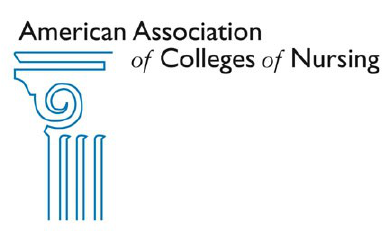
1
Diversity, Equity, and Inclusion in Academic Nursing
AACN Position Statement
As the collective voice for academic nursing, the American Association of Colleges of Nursing
(AACN) serves as the catalyst for excellence and innovation in nursing education, research, and
practice. The values of diversity, inclusion, and equity are central to advancing AACN’s mission.
This AACN position statement is intended to articulate the vision and principles of AACN
associated with these values, which may be reflected in similar statements by AACN members.
Introduction
Relevant research affirms the core interests of AACN members in advancing diversity, inclusion,
and equity in academic nursing. As reflected below, those interests center on many facets of
nursing education, central to the success of nursing schools in 21
ST
Century America. They
reflect the need to:
1. Improve the quality of education by enhancing the capacity of academic nursing to
maximize learning opportunities and experiences for students and faculty, alike, which
depend in significant ways on learning from individuals with diverse life experiences,
perspectives, and backgrounds.
2. Address pervasive inequities in health care by ensuring the preparation of nurses and
other healthcare professionals able to meet the needs of all individuals in an increasingly
diverse American society.
3. Enhance the civic readiness and engagement potential of nursing students who will be
in positions of leadership in health care, as well as in society, more broadly.
As used in this position statement, diversity references a broad range of individual, population,
and social characteristics, including but not limited to age; sex; race; ethnicity; sexual
orientation; gender identity; family structures; geographic locations; national origin; immigrants
and refugees; language; physical, functional, and learning abilities; religious beliefs; and
socioeconomic status. Inclusion represents environmental and organizational cultures in which
faculty, students, staff, and administrators with diverse characteristics thrive. Inclusive
environments require intentionality and embrace differences, not merely tolerate them. Everyone
works to ensure the perspectives and experiences of others are invited, welcomed,
acknowledged, and respected in inclusive environments. More broadly, equity is interrelated
with diversity and inclusion. Equity is the ability to recognize the differences in the resources or
knowledge needed to allow individuals to fully participate in society, including access to higher
education, with the goal of overcoming obstacles to ensure fairness (Kranich, 2001). To have
equitable systems, all people should be treated fairly, unhampered by artificial barriers,
stereotypes or prejudices (Cooper, 2016).
2
Improving the Quality of Nursing Education
When diversity is integrated within inclusive educational environments with equitable systems in
place, assumptions are challenged, perspectives are broadened, and socialization across a variety
of groups occurs, resulting in intellectual and cognitive benefits for all learners (Hurtado, 2005;
Chang, Denson, Saenz, & Misa, 2006; Saha, Guiton, Wimmers, & Wilkerson, 2008). In diverse
and inclusive environments, students, staff, faculty, and administrators recognize the value of
and need for diversity to achieve excellence in teaching, learning, research, scholarship, service,
and practice. As academic nursing becomes more inclusive in the recruitment of diverse
learners, faculty may need to acquire new knowledge, skills, and attitudes to foster success of the
student learner (International Council of Nurses, 2008).
Notably, realizing the benefits of diversity in the profession of nursing depends in part on
expansion of the traditional pool of nursing school applicants and the employment of faculty and
staff by appropriately defining variables reflecting the value and diversity of the human
experience. With respect to students, in particular, leadership and faculty should examine how
potential student applicants are assessed for meeting qualifications and how merit (or the
likelihood of success in nursing) is evaluated. The measures of an applicant’s readiness for
nursing education and preparedness for practice should extend beyond reliance on specific
quantitative data such as standardized test scores and grade point averages, to include other valid
and reliable measures of prospective success. Factors such as leadership skills, ability to
overcome obstacles, strengths, communication and language skills, ability to gain entrée into
underserved communities, other transferable skills and abilities, and prior life experiences of
individuals, may be relevant when determining how the applicant might contribute to the
profession and/or to the academic environment of a particular institution (Glazer & Bankston,
2014).
In addition, academic leadership and faculty should examine any unconscious and conscious
biases that may undermine efforts to enhance diversity, inclusion, and equity, including the use
of everyday verbal, nonverbal, intentional or non- intentional messages which devalue the
perspectives, experiences, and/or feelings of individuals or groups. These biases may restrict
academic nursing’s ability to attract and retain a more diverse student body and to recruit and
promote diverse leaders, faculty, and academic support staff.
Addressing Healthcare Inequities
AACN recognizes the impact of shifting U.S. population demographics, a health system
challenged by workforce shortages, and persistent health inequities on academic nursing.
Therefore, AACN and its member schools commit to accelerating diversity, inclusion, and equity
initiatives to prepare the current and future nursing workforce to be reflective of the society it
serves while simultaneously fulfilling societal expectations and needs (Relf, 2016; Danek &

3
Borraya, 2012).
1
Healthcare reform has revitalized efforts to examine how our nation’s health system should
evolve to meet the needs of all persons while being representative of the population served
(Danek & Borrayo, 2012). By 2044, more than half of the United States population will belong
to a census grouping other than non-Hispanic White (Colby & Ortman, 2015). By 2060, one in
five Americans will be foreign born. Health inequities, including diminished life expectancy and
poor health outcomes, vary based on race, ethnicity, culture, sexual orientation, gender identity,
age, and socioeconomic status. The social determinants of health – the conditions in which
people are born, grow, learn, live, work, play, worship, and age – coupled with the distribution of
money, power and resources are primarily responsible for these inequities (World Health
Organization, 2016; Healthy People 2020, 2016).
Advancing Civic Leadership and Engagement
The desired nursing workforce that results from creating more diverse and inclusive nursing
schools would be better prepared to advocate with and for others—including engaging with
community leaders to work toward achieving equity in health and wellbeing The benefits of
diversity and inclusivity in education programs also can help prepare health professionals to take
action on or address the social determinants of health described above. (National Academies of
Sciences, Engineering, and Medicine, 2016, p. 11-20).
Conclusion
To improve the quality of nursing education, ameliorate health inequities, and advance leadership
in the profession and society at large, the values and principles of diversity, inclusion, and equity
must remain mission central. These values and principles should be a part of the ongoing
dialogue of AACN-member nursing schools, which are responsible for defining their particular
educational missions and then engaging in the work to make those visions become a reality.
Nursing school leaders, administrators, faculty, staff, and students must continue to
collaboratively engage in efforts to recruit, retain, and graduate students who will advance
institutional missions, which should address issues of diversity, inclusion, and equity.
AACN recognizes diversity, inclusion, and equity as critical to nursing education and
fundamental to developing a nursing workforce able to provide high quality, culturally
appropriate, and congruent health care in partnership with individuals, families, communities,
and populations. AACN is committed to preparing a community of scholars, clinicians,
educators, and leaders who fully value the importance of diversity, inclusion, and equity to
promote the health of the nation and the world. AACN will advocate for advancing diversity,
1
As outlined in each of the AACN Essentials documents, which delineate the curriculum content
and expected competencies of graduates of baccalaureate and higher degree nursing programs,
administrators, faculty, staff, and students in schools of nursing are charged to advocate for
social justice, including a commitment to promoting the health of all people and the elimination
4
inclusion, and equity in nursing through its public policy initiatives and in its regulatory
advocacy, in collaboration with the Tri-Council for Nursing and other health professions
of health inequities. Social justice is acting in accordance with fair treatment regardless of
economic status, race, ethnicity, age, disability, sexual orientation, and gender identity (AACN,
2008). In the pursuit of social justice, institutions, systems, structures, policies and processes
should advance fairness and equity (Buettner-Schmidt & Lobo, 2012).
education organizations. It is imperative that academic nursing advance human rights and reduce
health inequities by developing a nursing workforce that is compassionate and respectful of the
inherent dignity, worth, and unique attributes of every person as outlined in the American Nurses
Association’s Code of Ethics for Nurses (2015) and Nursing’s Social Policy Statement
(ANA,2010).

5
References
American Association of Colleges of Nursing. (2008). The Essentials of Baccalaureate Education
and Professional Nursing Practice. Washington DC.
American Nurses Association. (2015). Code of ethics for nurses with interpretive statements.
Accessed online at
http://www.nursingworld.org/MainMenuCategories/EthicsStandards/CodeofEthicsforNur
ses/Foundational-and-Supplemental-Documents
American Nurses Association. (2010). Nursing’s Social Policy Statement: The Essence of the
Profession. Silver Spring, MD.
Buettner-Schmidt K & Lobo ML. (2012). Social justice: a concept analysis. Journal of
Advanced Nursing, 68(4), 948-58. doi: 10.1111/j.1365-2648.2011.05856.x.
Chang, MJ., Denson, N., Saenz, V., Misa, K. (2006). The educational benefits of sustaining
crossracial interaction among undergraduates. Journal of Higher Education
77(3):430455.
Colby, S. L. & Ortman, J. M. (2015). Projections of the size and composition of the U.S.
population: 2014 to 2060, Current population reports. P25-1143. Washington, DC: U.S.
Census Bureau.
Cooper, C. L. (2016). The Blackwell Encyclopedia of Management. Blackwell Publishing,
Blackwell Reference Online. Accessed at
http://www.blackwellreference.com/public/book.html?id=g9780631233176_9780631233
176
Danek, J. & Borrayo, E. (2012). Urban universities: Developing a health workforce that meets
community needs. Retrieved from:
http://urbanuniversitiesforhealth.org/media/documents/Urban_Health_Workforce_Final_
Report.pdf.
Glazer, G., & Bankston, K. (2014, September ). Holistic Admissions in the Health Professions.
Retrieved July 18, 2016, from
http://urbanuniversitiesforhealth.org/media/documents/holisticadmissionsinthehealthprof
essions.pdf
Healthy People 2020. (2016). Social determinants of health. Accessed online at
https://www.healthypeople.gov/2020/topics-objectives/topic/social-determinants-ofhealth
Hurtado, S. (2005). The next generation of diversity and intergroup relations research. Journal of
Social Issues 61(3):595-610.
International Council of Nurses (ICN). (2008). Nursing care continuum – framework and
competencies. Geneva, Switzerland: ICN.
Kranich, N. (2001). Libraries and Democracy, Chicago, IL: American Library Association,
2001: 15-27.
National Academies of Sciences, Engineering, and Medicine. 2016. A framework for educating
health professionals to address the social determinants of health. Washington, DC: The
National Academies Press. doi: 10.17226/21923. Accessed at
http://nationalacademies.org/hmd/Reports/2016/Framework-for-Educating-
HealthProfessionals-to-Address-the-Social-Determinants-of-Health.aspx
Relf, M. V. (2016). Advancing diversity in academic nursing. Journal of Professional Nursing.
32(55):S42-47) doi: 10.1016/j.jana.2015.11.008.

6
Saha, S., Guiton, G., Wimmers, P., & Wilkerson, L. (2008). Student body racial and ethnic
composition and diversity-related outcomes in US medical schools. Journal of the
American Medical Association, 300(10), 1135-1145.
World Health Organization. (2016). What are the social determinants? Accessed online at
http://www.who.int/social_determinants/sdh_definition/en
7
AACN Diversity and Inclusion Advisory Group
Carolina G. Huerta, EdD, RN, FAAN (Chair)
University of Texas Rio Grande Valley
Azita Emami, PhD, RN, FAAN
University of Washington
Greer Glazer, PhD, RN, FAAN
University of Cincinnati
Judith Martin-Holland, PhD, RN, FAAN
University of California, San Francisco
Judith Lewis, EdD, RN
D’Youville College
Michael Relf, PhD, RN, FAAN
Duke University
Edilma L. Yearwood, PhD, RN, FAAN
Georgetown University
Lin Zhan, PhD, RN, FAAN
University of Memphis
AACN Staff
Vernell DeWitty, PhD, RN
Endorsed on March 20, 2017 by AACN Members
Position statement titled changed in February 2021 to reflect current terminology. The original
title was Diversity, Inclusion, and Equity in Academic Nursing.
